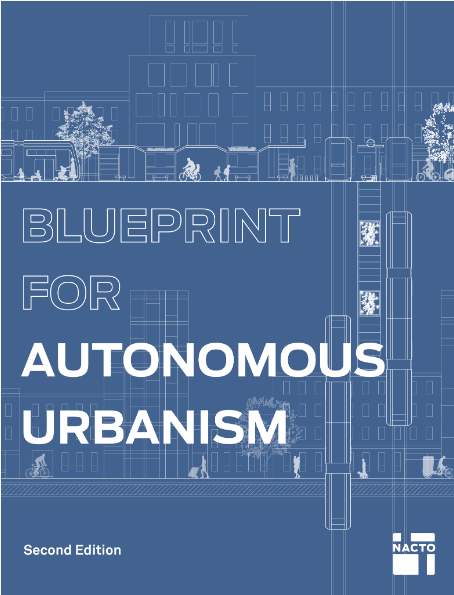NACTO Blueprint for Autonomous Urbanism
The National Association of City Transportation Officials released a blueprint for cities to plan for autonomous vehicles, that “lays out a vision for how autonomous vehicles, and technology more broadly, can work in service of safe, sustainable, equitable, vibrant cities.” The Blueprint covers four key policy areas: transit, freight, pricing, and data. It also lays out the following core principles for autonomous urbanism:
- Design for Street Safety: Cities should prioritize safety of people walking and biking, and cities should design streets that necessitate lower speeds. Automated vehicles should be programmed for low speeds on city streets, and programmed to automatically detect and yield to people outside of the vehicle.
- Move People Not Cars: Cities must prioritize the modes that move people efficiently—transit, biking, and walking—by reallocating street space and supporting people-focused street redesigns with smart pricing, curbside management, and data policies.
- Distribute the Benefits Equitably: Cities need to consider equity from all angles (access, safety, labor, mobility, affordability and engagement) and actively ensure that the benefits of automation are shared equitably.
- Data-Driven Decision Making: Cities need data about activity on city streets, and the ability to distribute information to companies and private citizens.
- Technology is a Tool: AV and technology policy should be centered on human values, and should maximize public benefits, inclusivity, and sustainability
- Act Now!: Cities that are proactive in redesigning streets and policy can ensure AVs align with city goals

